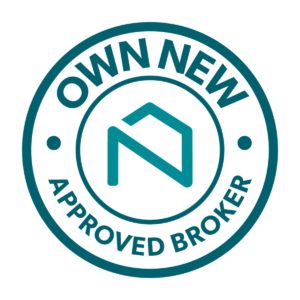Equity Release For Buy To Let Mortgage

Equity Release is quite a popular finance option for people over the age of 55 who want to access the value in their property through a Lifetime Mortgage product.
Equity Release for buy to let properties is less common but there are several scenarios where it can be beneficial.
To start up in property investment or to expand a property portfolio, it is not always necessary to have money readily available to buy properties outright. There are a few finance options for property investors to consider.
Some landlords take out bridging loans against their own property, but this can be risky, while taking out Equity Release with buy to let properties has a lot less risk and is therefore a more popular strategy for raising capital.
What is Buy to Let Equity Release?
While the terms Equity Release and releasing equity are often used interchangeably, they are actually different financial solutions.
Releasing equity is usually done through remortgaging a property with a conventional mortgage.
Whereas, an Equity Release mortgage, known as a Lifetime Mortgage, is a loan taken out against the property.
Standard Lifetime mortgages are for homeowners aged over 55, usually to provide more money in retirement for lifestyle, home improvements, to gift to family members, or for many other reasons.
The homeowner takes out a loan that is secured against the property and when they die or move into permanent residential care, the loan is either repaid through the sale of the property or from beneficiaries remortgaging it themselves.
People who have a buy to let property may be able to take out a Lifetime mortgage to access the capital tied up in the property.
Landlords can access equity in their buy to let property once a certain amount of the mortgage has been paid off, or if the value of the property increases to create enough equity.
Releasing equity from a buy to let property is usually quite straightforward, as long as there is equity in the property and there are no issues such as adverse credit.
In some cases, a better deal may be available, so remortgaging has additional benefits as well as releasing equity.
Free video and phone consultations offered in the UK.
Get Started NowRemortgaging a buy to let property to release equity
Landlords who have equity in their buy to let property often have a strategy where they use equity in one property to purchase another and continue to build up their portfolio by purchasing more properties using the equity.
They might also use Equity Release in a buy to let property to fund refurbishments and maintenance.
For example, they could access Equity Release to refurbish an HMO to create more bedrooms, which would increase the rent yield potential.
With Equity Release products, such as Lifetime Mortgages, borrowers can raise money for many purposes.
For example, reasons such as ‘Lifestyle’ are acceptable to Lifetime Mortgage lenders. Whereas standard buy-to-let lenders who offer conventional mortgages are far more restrictive.
They may insist on the money being raised for ‘Debt Consolidation’, ‘Home Improvements’ or other reasons that directly or indirectly benefit the lender.
Therefore, if you would like to release equity for reasons that are usually unacceptable to traditional buy-to-let mortgage lenders, such as perhaps gifting money to family, Lifetime Mortgage lenders may provide a suitable solution for you.
For landlords who have a portfolio of properties, it may also be possible to apply for a portfolio mortgage, where you can have one single mortgage for all of your properties, so it is easier to manage with one single mortgage payment each month.
Alternative ways to release equity
There are other ways to release equity rather than remortgaging, such as obtaining a further advance from the existing lender as you already have a relationship with them.
Even if you have been with the lender for some time, they will still probably perform affordability checks and a credit check to identify any potential risks.
Another alternative is taking out a second secured loan, otherwise known as a second charge.
This is a loan taken out against the property with a different lender to your mortgage. The first charge is your mortgage lender, while the second charge is your secured loan lender.
This type of arrangement is appealing to people who want to keep their existing mortgage deal but do not want to take out a further advance from the same lender, possibly because there is a better deal available from another lender.
Just like with a mortgage, if you miss payments on a secured loan against your property, you risk it getting repossessed.
Also, the interest rates for second charges can be higher than first charge mortgage rates, depending on how much equity is in the property.
With a second charge, you will also be paying for two mortgages rather than one, so it is more difficult to manage.
What Our Clients Have To Say
Lifetime mortgage on a buy to let property
Many people are now choosing to buy a second property and let it out as part of their retirement fund instead of investing all their money into pensions.
This can be a good way to build up a pot of money, although there are obviously tax obligations and legal requirements involved with becoming a landlord.
If you have a buy to let property as well as your own home, you can take out Equity Release in the buy to let property so that you are not using your own home for collateral.
The downside of using the buy to let property for Equity Release is that it may be valued less than your home, in which case you would not be able to release as much equity.
With a lifetime mortgage on your own home, you are typically able to release up to 50% of the property value, depending on factors such as your age, how much equity there is in your home and health details.
If you want to take out Equity Release on a buy to let property, you will only be able to release a lower percentage.
Lifetime mortgage on a buy to let eligibility
This is the eligibility criteria:
Aged 55+
As with a lifetime mortgage on your own property, to be eligible for a lifetime mortgage, you must be aged over 55 and some lenders require you to be over 60.
Have adequate equity
Another dependency to qualify for a lifetime mortgage on a buy to let is that you have enough equity in the property.
This amount will vary from lender to lender, so even if one lender is not prepared to give you the amount you require, another lender may.
Tenants in the property
You must also have tenants in the property, as the lender will see a vacant property as a risk.
Assured tenancy agreement
As well as having tenants in the property, the lender will require you to have an assured shorthold tenancy agreement, which is a fixed term tenancy of at least six months but sometimes for a year or longer.
How much can I borrow?
The amount that you can borrow will depend on a number of factors:
Property value
The more your property is worth, the more you will be able to borrow.
The lender will base their valuation assessment on how much your property could sell for on the open market.
If the property is in poor condition or there are some significant repairs that would be required before the property is sold, this will also be taken into account.
Some lenders will request that you have this work completed before they agree to lend to you.
Personal information
When a lender is considering how much to lend, they will make an estimation of how long the borrower is likely to live for, as this will affect how much money they make from the deal.
This is why the applicant’s age is a consideration, as well as their health.
People who have previous or existing health conditions that could reduce their life expectancy may be able to borrow more money than people who are in good health.
Conclusion
Whether you have a second property because you inherited it or if you have multiple properties as a property investor, taking out Equity Release against your buy to let can be a very beneficial option.
For retired homeowners with a buy to let, they can take out Equity Release on the second property without worrying about not being able to leave their residential home to their beneficiaries.
For property investors aged over 55, releasing equity through a lifetime mortgage might be a preferable option to remortgaging the property, as it means you will not have the mandatory monthly mortgage payments to make.
However, be aware that lifetime mortgage interest rates may be higher than those available on the open market with conventional buy-to-let mortgage lenders.
The Equity Release Lifetime Mortgage loan on the buy-to-let is only repaid once you die.
Releasing equity through a standard remortgage is usually a more suitable option than a lifetime remortgage if you are a property investor looking to expand your property portfolio due to the likely difference in cost.
If you are considering a conventional buy-to-let mortgage or a lifetime mortgage, you should speak to a broker that is qualified in both areas, such as Boon Brokers, so that you can get advice on the most suitable type of finance solution.
If you would like to speak to an expert on buy to let Equity Release, our team at Boon Brokers can provide you with all of the information and guidance you need to find the right solution and the most cost-efficient deal.
Gerard BoonB.A. (Hons), CeMAP, CeRER
Gerard is a co-founder and partner of Boon Brokers. Having studied many areas of financial services at the University of Leeds, and following completion of his CeMAP and CeRER qualifications, Gerard has acquired a vast knowledge of the mortgage, insurance and equity release industry.Related Articles
- Mortgage Broker Fees
- How Much Does The Average Mortgage Cost
- How To Get A Mortgage With A New Job
- What Documents Are Needed For A Mortgage?
- What Is A 100% Mortgage
- How To Build Home Equity
- Advantages Of A Mortgage Broker
- The House Buying Process
- What Is A Mortgage In Principle?
- Mortgage Borrowing Calculator
- Can I Overpay My Mortgage?
- The Mortgage Underwriting Process









